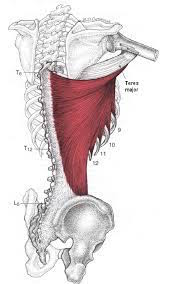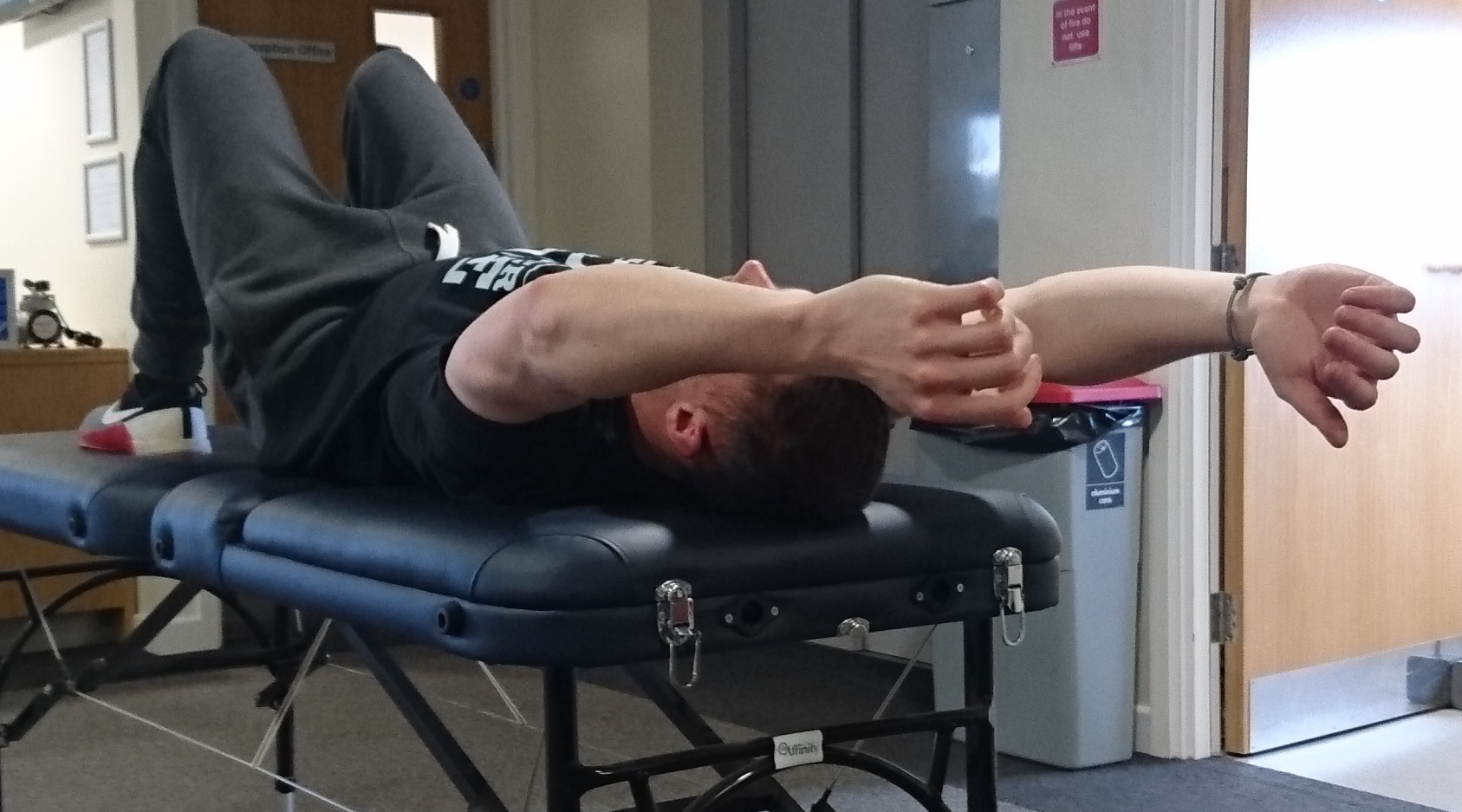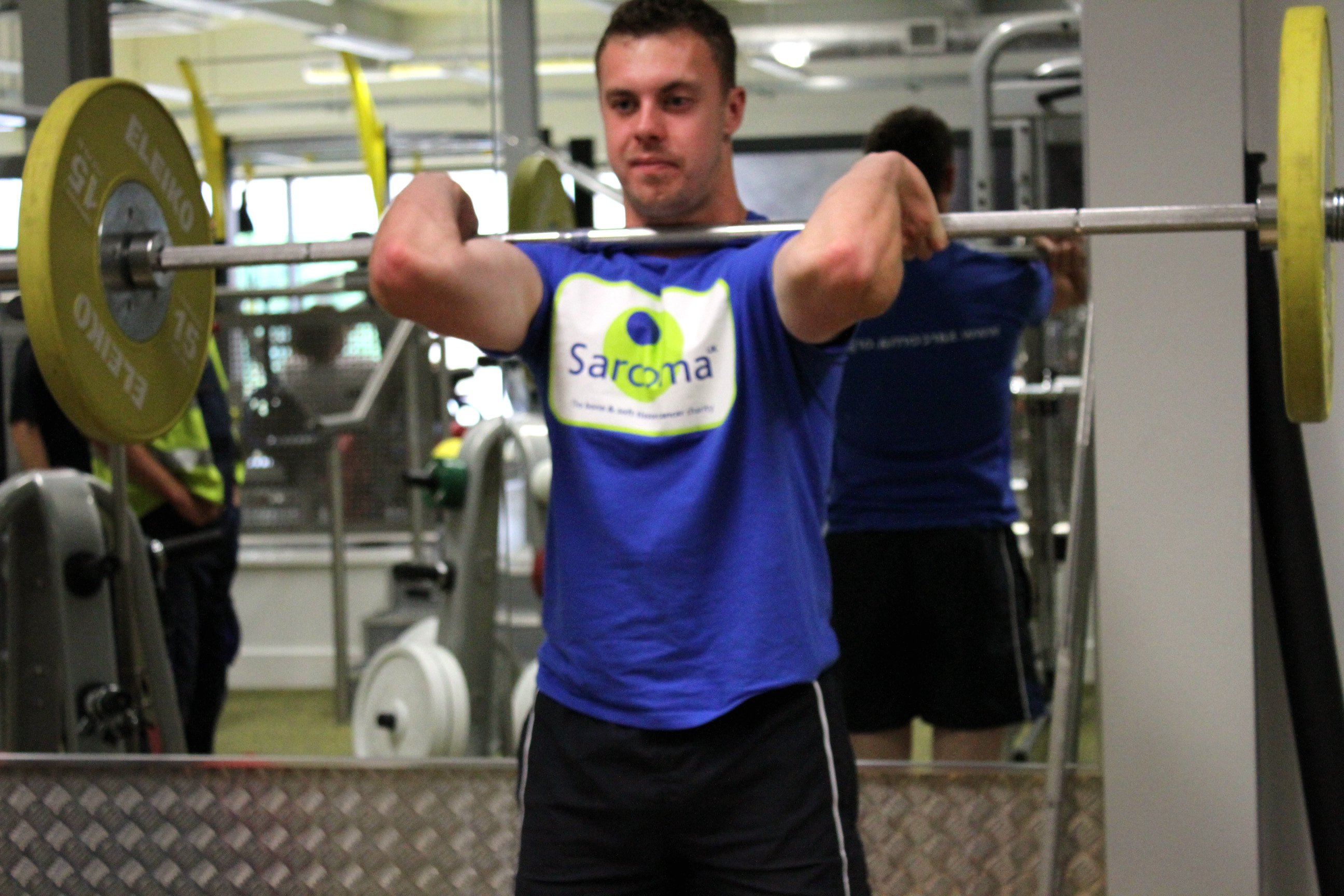IMPROVE MY GAME
Articles
What The Lat Test Means For Your Swing And How to Improve Your Result

In the past year or so I have performed plenty of TPI screens on golfers and I can tell you that one of the most commonly failed screens in amateur golfers is the Lat Test. This is important as, research has shown that better golfers exhibit more shoulder flexion in the swing (shoulder flexion is what’s tested in the Lat Test). Further, older and higher handicapped golfers tend to exhibit less shoulder flexion, whilst a loss of shoulder flexion in the golf swing is also correlated with injury.
In my opinion, the Lat Test is probably the most misunderstood test in the TPI golf screening in terms of what it tests and how it affects the golf swing. I can tell you from personal experience it can also be one of the most frustrating test results to improve as well.
How to do the Lat Test
Standing with your back against wall, slowly slide down the wall until you are in a quarter squat position. Make sure that the feet are directly below the knees and not too close to the wall. Make sure the feet are approximately shoulder width apart. Most importantly, make sure that the lower back is flush against the wall (placing a golf club between the lower back and the wall will help provide feedback that the back is, and stays, flush to the wall).
With arms at your sides, thumbs pointing forward and arms straight, begin raising the arms up over your head without bending the elbows as far as they can go. You should be able to touch the wall with your thumbs without the elbows bending or the lower back arching off the wall (the club falling). If you experience any pain stop the test at the point.
What the lats actually do in the golf swing
The lats are one of the largest muscle groups in your body. One attachment point is on the front of your humerus (or upper arm bone), with the other attachment point intersecting with your thoracolumbar fascia and connecting to your lower back, upper pelvis and sacrum.

Typically when we talk about the function of the lats we think of their concentric actions. The lats are responsible for:
- Shoulder Internal Rotation – Turning the arm/hand inward.
- Shoulder Extension – Bringing the arm down/back from an overhead position.
- Shoulder Adduction – Bringing the arm down towards the midline of the body.
In itself this is important in the golf swing, internal rotation and adduction are two movements, occurring in the downswing, that contribute hugely to power generation.
However, focusing solely on what a muscle does concentrically (i.e., when it’s shortening), versus what it does eccentrically (i.e. when it’s lengthening) is limiting thinking.
So while all of the above is true, we can also say the lats:
- Resist or control shoulder external rotation,
- Resist or control shoulder flexion, and
- Resist or control shoulder abduction.
This is important for the golf swing as the top of the backswing position requires shoulder abduction, shoulder flexion and shoulder external rotation. Tight lats may therefore then affect our ability to maintain posture in the backswing, also the ability to rotate the shoulder as necessary to exhibit correct swing plane in the swing.
But even this viewpoint doesn’t do the lats justice. Instead of simply looking at their action on the arm, we also need to look at what happens at the other end of the lats, where they act on the pelvis and lumbar spine
Any time you reach your arms overhead (as you do in the backswing), you are putting the lats on stretch, or lengthening them. Their connection to the lower back and pelvis means this stretch on the lats also pulls on the pelvis and lower back.
So what happens if you don’t have adequate control of your lower back and pelvis, or if your lats are too stiff?
You’ll likely fall into an anterior pelvic tilt or s posture as we golfers call it.
Every time you go to put your hands above your head, like in the backswing, you will either have to stand up out of your golf posture to get there, or you will go into excessive anterior tilt at the pelvis. We know that is S-posture can limit rotation in the golf swing, the excessive anterior tilt causes the muscles of the abdominals to extend, limiting their ability to effectively contract to provide stability and power. Potentially leading to a reverse spine angle and most certainly putting the lower back in a more compromising position.
Dave Phillips refers to the pelvis as the ‘power plug’ in the golf swing. Any time you unplug the pelvis you lose posture and ultimately power, sliding into s-posture due to poor lat length represents an unplugging of that power plug.
When it comes to the Lat Test the lats are only half the story…
The Lat Test is actually testing your ability to display full shoulder flexion. Failing to might happen because you lack strength/ stability in the anterior core or the lower trapezius, upper trapezius and serratus anterior (these are the muscles responsible for the upward rotation of the scapular that drives elevation of the arms, you can find more detail on this here), you may lack thoracic extension, have short/ stiff lats, teres major, the long head of the tricep or a capsular issue with the shoulder.
Note: If your shoulder flexion is limited, regardless of what the limits it, you shouldn’t be overhead pressing. If you can’t achieve full shoulder flexion you essentially can’t put your hands over your head without compensation, adding load to this situation is only going to make things go south pretty quickly. You’re asking for a beat up rotator cuff, bicep tendon or labrum. Use incline presses or landmine presses in place of vertical pressing in the meantime.
Fixing your Lat Test
In a screen called the lat length the obvious solution is to stretch the lats to improve the result, and indeed I’ve heard many a golfer relay stories to me of stretching forever to improve their lat length test to no avail other than mounting frustration. As you hopefully are now aware there is a whole lot more going on in the lat length test than just lat tightness.
Pretty much everyone, and especially those that fail the lat length test can benefit from thoracic extension work. Trying to demonstrate full shoulder flexion from the classic office worker/ sitting posture with upper back rounded, shoulders and neck pitched forward is almost impossible. In fact you are more likely to over extend at the low back, compounding a fault movement pattern and putting the low back into a compromised position.
Some sort of thoracic extension work is therefore the first port of call. In fact, exercises like bench t-spine extension below are in the warm-ups and mobility workouts of every client I work with. The cool thing about thoracic extension is it’s almost impossible to have too much and almost nobody has enough.
Once we have addressed thoracic extension to the extent the shoulder girdle is now in a much better position to allow full flexion to be demonstrated we can start to narrow down causes of our limited shoulder flexion.
For this we repeat the test but lying on a physio table (a bed will also work nicely). From this position you should be able to get the arms all the way down to the table, so this (pictured below) would be no good, as even though the hands may have reached the level of the table, the humerus has not reached the table.

By repeating this test lying on our back we have essentially removed the stability requirements and now have gravity helping to drive the elevation of the arms.
If we are now able to demonstrate full shoulder flexion we know the fault lies with the muscles responsible for upward rotation of the scapular lacking strength/stability. If you still can’t show full shoulder flexion the fault is a mobility issue with the lats, teres major, long head of the tricep, etc.
Those with a strength/stability issue should incorporate wall slide and y-raise variations, either as part of their warm-ups or in the main workout as fillers in between sets of strength work.
For those with mobility issues stretching and SMR techniques working on the lats, teres major, tricep will be needed.
The reach, roll, lift exercise can also be useful to issues with the inferior aspect of the joint capsule.
There is one exercise I recommend including in your programs regardless of what causes you limitations in shoulder flexion, that is the modified kettlebell pullover. This exercise strengthens the muscles via eccentric contraction, down regulates the lats to improve their mobility as well as providing some good anterior core and pelvic control work – talk about bang for you buck! Plug this in towards the end of your workout, after your heavy lifts, in place of an anterior core exercise such as planks or deadbugs. The key is to lower the weight slowly and breath out the entire time you are lowering. You don’t need to shoot for a big range of motion, just go until feel a stretch in the shoulders or until your lower back begins to come off the floor.
This seems to work like magic for a lot of folks; in fact, if struggle with the Lat Test, test it then do 2 to 4 reps of the modified kettlebell pullover and retest. In most cases the Lat Test improves instantly.
Hopefully this article has given you the knowledge and a plan to attack your poor shoulder flexion so now it’s over to you. That said, any questions you have or if you just want to let me know who you got on with some of these exercises, please feel free to comment in the comment section below or contact me via nick@strongergolf.org

Nick Buchan is a UK Strength & Conditioning Association member, golf coach, AGMS graduate and TPI Certified expert. His goal is to help golfers become stronger and play better by delivering the best in cutting edge training advice. Website: www.strongergolf.org